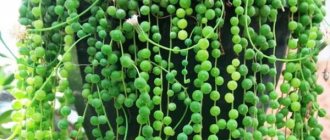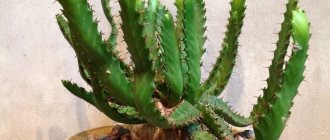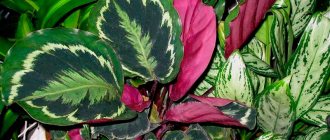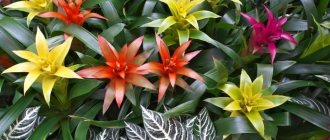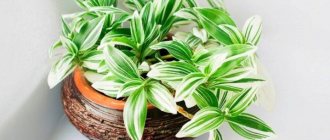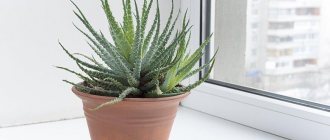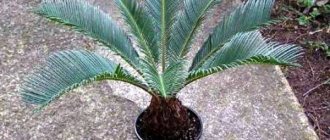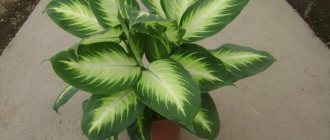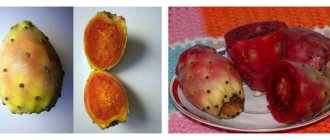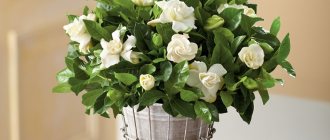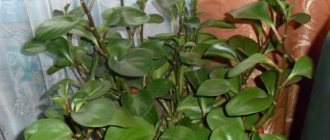Episcia belongs to the Gesneriev family and is a small bush with velvety leaves, strewn with small bell-shaped flowers. They can easily decorate any home.
How to care for an episcia flower? It's not difficult to do. However, some nuances should be taken into account:
- loves moisture;
does not tolerate drafts;
The life of a plant is influenced by several factors:
- lighting;
- humidity;
- air temperature;
- soil composition;
- proximity to other plants.
For each type of indoor plant, such conditions are individual.
Choosing a location and lighting
In its historical homeland, the flower grows in tropical conditions, which provide high humidity, warmth and sunlight. Therefore, when choosing a location, you must be guided by these points. The episium will feel good on a window, shelf, cabinet, stand, where enough light and heat penetrates. It is possible to use it in the form of an ampel, only in a place protected from the wind.
Watering and air humidity
The plant loves water very much, but you should not overdo it. You need to water regularly, but in small portions. Excess moisture can lead to fungal diseases and root rot.
For your information! Periodically you need to spray the leaves with water from a spray bottle so that the air humidity is 50-60%.
Root system affected by fungus
Lighting and air temperature
This flower, of course, cannot live without the sun at all, but it does not tolerate direct rays well. The light should be slightly diffused. For this reason, it is better to place it on windows on the east or west side. As a tropical plant, episcia needs optimally warm temperatures. The range should be between 18 °C and 25 °C.
Note! In winter, it would be preferable to move the pot away from drafts.
Features of care during the rest period
Typically this period of time occurs in winter. As a rule, there are no special requirements during this period. It is only necessary to water less often (once a week), do not fertilize and place it in a place protected from drafts.
Features of care during the flowering period
Flowering occurs almost all year round, but it is especially beautiful in spring and summer. It is at this time that the flower requires maximum attention.
Blooming carnation episcia
In order for the plant to look healthy, certain conditions must be observed.
- watering as the soil dries out;
- fertilizing once a month, preferably with a phosphorus-potassium mixture;
- temperature within 18-25 °C;
- sufficient lighting.
How to transplant episcia
With proper care, the episcia bush will grow quickly. And then there is a need to transplant into another pot. When to do it:
- young plant - once a year;
- adult plant - once every 2 years.
The most suitable time is spring. To make the transplant procedure less painful, everything should be done carefully and according to plan.
- Moisten the soil in the pot generously.
- Tap the outside walls on the sides to loosen the lump.
- Remove the flower along with the soil.
- Remove diseased roots and shoots.
- Place in a new vessel, sprinkle with prepared soil.
- Water well.
- Place in the shade for a week.
When new shoots and flowers appear, this means that everything went well, so you can put the flowerpot in its original place.
Transfer
The young culture is replanted once a month. Mature bushes - annually. The dishes are wide but low. Sphagnum and charcoal are added to the soil. Drainage is placed at the bottom.
Episcia dianthus
Before the procedure, the plant is moistened to make it easier to remove it with an earthen lump. If there are several young plants in the pot, separate them. Add new soil and water.
Possible problems, their causes and solutions
Like any living organism, episcia will react to any changes in the external environment: humidity, temperature, nutrients, lighting. This can be seen by the following signs: leaves change color, become lethargic, dry out, growth and flowering stop.
Why does episcia not bloom?
There are several reasons. First of all, this is a lack of nutrients in the soil, then a lack of moisture, and thirdly, there is little sun.
Diseases and pests
The presence of problems is caused, first of all, by incorrect content. The most common ailments:
- rot - excess moisture, damage by insects, fungi. In the latter case, the flower may die. The roots are affected more often than other parts;
- does not grow - there is not enough light or there are pests;
- leaves turned yellow - excess nutrients, often nitrogen;
- gray coating - there may be fungi, or perhaps the acidity of the soil has increased;
- brown spots - a reaction to cold water;
- drooping appearance - perhaps there are nematodes in the soil;
- the leaves curled into a ball - aphids.
Episcia, which is easy to care for at home, is not much different from keeping other representatives of the flora. But in order for her to always please her owner, you should still get acquainted with her agricultural technology.
Reproduction of Episcia at home
A plant such as episcia will always find its admirers, because there are many varieties of it. And the question often arises of how to propagate episcia.
In order for a healthy plant to grow in the house, propagation should be done in one of five ways: cuttings, shoots, leaves, tendrils, and dividing the bush.
For your information! The generative method is not excluded, although it is rarely used.
The choice of breeding method depends on the variety, age, and general condition. The vegetative method is carried out in the following order:
- A leaf, shoot, or cutting is cut off.
- The cut is treated with a growth-accelerating solution.
- The shoot is placed in a small vessel with peat-sphagnum soil, or simply in water.
- Watering.
- Closes with a jar or glass.
- After 1-1.5 months, roots appear.
- Transplant into a container.
Episcia leaf propagation
Reproduction using a leaf blade is the most accessible and productive method. Take a healthy leaf and place it in water. When roots appear at the bottom and a slight swelling at the top, it is necessary to transplant the leaf into a container with soil and cover it with a jar. After 1.5-2 months, young leaves appear.
Note! There is no need to tear off the old sheet, it will fall off on its own.
Propagation by cuttings
Cuttings or shoots are used. Take a shoot with 4-5 leaves. The lower 2-3 pairs are broken off, and the process is placed in water. It is better to take a vessel from dark glass or plastic. Roots should appear within a month. A young plant is planted first in light soil, then in normal soil.
Episcia is an amazing representative of perennial indoor flowers, the cultivation of which will bring many pleasant moments to anyone. The velvety leaves are especially striking in their colors. But flowers also pleasantly delight others.
As you can see, growing this flower at home is easy and simple. Even a novice gardener can do this. The main thing is not to overwater the pot, provide enough light and fertilize on time.
Description of the plant
Episcia is an evergreen perennial with soft, drooping stems. The height of the plant is 15-20 cm, the annual growth is small. Lateral shoots form on the shoots, and upon contact with the ground the plant quickly takes root. The episcia root system is represented by tuberous growths that are connected to each other by horizontal tendrils.
The main decoration of the plant is its large pubescent leaves. They grow on petioles oppositely, forming a dense symmetrical rosette. An oval leaf plate with a smooth or wavy edge ends with a pointed or rounded end. It is covered with a relief pattern of veins or is smooth, with one central vein. The leaf grows 5-20 cm in length and 3-10 cm in width. The surface of the fleshy leaf can be densely pubescent with short soft hair or remains shiny. The color of the leaves depends on the species, it is very diverse. There are plants with monochromatic olive-green leaves or variegated ones, with a contrasting border and spots. The fleshy foliage remains on the shoots for several years, so the plant does not become bare and remains decorative for a long time.
Episcia is not only attracted by its leaves. Its delicate flowers bloom in May and last until September. They have a tubular shape with five petals separated at the edges and strongly bent. The flowers are colored scarlet, pink, orange, yellow or white. The length of the flower tube is 3 cm, with a diameter of about 1.5-3 cm. The flowers are also pubescent. In some species, the edges of the petals are covered with long cilia. Flowers bloom on short thick stalks in the axils of the leaves singly or in groups of 2-4 buds.
How to care for a houseplant?
Lighting
Episcia is a plant that needs diffused light. Therefore, you should not leave it on southern windows, where the leaves may be exposed to direct sunlight. If there is no other option, then you should shade the flower from 10 a.m. to 2 p.m.
Northern windows are also not suitable for the plant: here it will lack light. During the period from mid-autumn to spring, when daylight hours are short, it is optimal to illuminate the episium with phytolamps or other devices.
Temperature
The flower feels great at room temperature. If indoors:
- below 16˚С - will die;
- 18-25˚С - normal growth and development;
- 25-35˚С - can exist with sufficient humidity;
- above 35˚С - it will die.
REFERENCE! Episcia is comfortable in the same conditions as humans.
Watering
The plant needs abundant watering: the soil should not be allowed to dry out.
But you shouldn’t allow water to stagnate either. It is optimal to water when the top layer of soil dries out (about once every 2-3 days).
In winter, this should be done a little less often - once every 4-5 days. You need to use settled water at room temperature and do not allow water to get on the leaves - they will begin to rot.
Therefore, bottom watering will be more convenient. There is no need to spray the epicion.
Humidity
The flower needs high air humidity. Young plants are especially demanding of this parameter; after watering, they should be covered with film.
To ensure optimal conditions, you can place the pot with episcia in a tray with wet pebbles , expanded clay or sphagnum moss. In the case when the plant is suspended, the same materials must be placed in the gap between the flowerpot and the container with the flower.
How to fertilize?
Episcia needs fertilizer only during the period of active growth. Therefore, in spring and summer it should be fed once every two weeks in small doses. Mineral and organic fertilizers should be used in a concentration 50% lower than indicated in the recommendations. Suitable for flowers:
- during the flowering period - fertilizers for flowering plants (“Etisso”, “Compo Sana” “Florovit”);
- the rest of the time - complex mineral (“Hesi Phosphorus Plus”, “Agree’s”, “Multiflor Aqua”) or organic (bird droppings, compost, humus) fertilizers.
Trimming
- Creeping shoots should be removed regularly, otherwise the flower will grow and look untidy.
- It is necessary to cut off the escaped shoots with daughter rosettes, this will give the episcia a beautiful shape.
When forming the crown, you should not allow the shoots to hang from the pot: they will rub against its edge.
To avoid this, you can install a trellis 15-20 cm high and attach shoots to it as they grow. This will give the plant a beautiful shape.
Reproduction
Episcia can be propagated in four ways: seeds, cuttings, rosettes and leaves. Inexperienced gardeners are better off choosing one of the vegetative methods and not having to worry about germinating seeds. A mixture of soil and sand in a ratio of 3:1 is suitable for planting.
REFERENCE! The planting substrate must be moist throughout the entire germination or rooting period.
Seeds
With this method, you need to take into account that new plants do not retain the varietal characteristics of the parent, that is, the color of the leaves and the pattern on them can be anything. Seeds should be sown on a damp, disinfected substrate and, without covering with soil, covered with film. Ventilation is necessary once a day. Shoots will appear in 25-45 days.
Cuttings
A young shoot with three to four nodes is suitable for use as a cutting. Moreover, it should not have lateral processes. The cuttings can be placed in water until roots appear or immediately planted in a small pot. Then you need to cover it with film or a jar.
Rosettes
In spring, a young rosette of the first order with 4 developed leaves should be planted in a small container without cutting the tendril from the mother plant. There is no need to bury it - just bury the bend of the stem 2-3 cm. You can secure the rosette using a pin or a weight.
At first, the seedling needs greenhouse conditions. Within 7-10 days the rosette should take root, then the tendril can be cut off and transplanted to a permanent place.
REFERENCE! Episcia is capable of producing whiskers from the first year of life.
Leaf
When using a leaf for propagation, you simply need to place it in water at room temperature.
After 3-5 days the first roots will appear. Then you should plant it in a small pot. It will take several months for new leaves to appear. In this case, the mother leaf will gradually wither and darken, giving strength to young shoots. You can’t tear it off, you have to wait until it falls off on its own.
Seedlings must be kept at a temperature of 23-24˚C and transplanted once a month into larger containers. The largest pot sufficient for an adult plant is 20 cm in diameter. The young flower should be carefully protected from the sun for a month.
Episcia varieties with photos and names
Episcia dianthiflora
This perennial is native to Mexico. Its stems are divided into 2 types: the first are long and thin, darkening over time, they easily take root at the nodes with tendrils and have daughter rosettes, and the second are short with closely spaced leaf blades. Small ovoid leaf plates reach 30 mm in length and 20 mm in width. The surface of the dark green foliage has slight pubescence and the central vein is scarlet. The white flowers are fringed at the edges, and in the throat they have spots of purple color.
Episcia cupreata
In nature, the species can be found in the tropical regions of South America at an altitude of about 2 thousand meters above sea level. The size of the bush of this plant is much larger than that of the previous species. Creeping stems easily give roots in the soil mixture. The surface of the elliptical leaf plate has strong pubescence, its length is about 30 centimeters and its width is up to 8 centimeters. The color of the front surface of the foliage varies from copper to brownish-green with a white stripe on the central vein, the underside is red with a green stripe. The color of single flowers is red. The length of the corolla tube is about 25 mm, its outer surface is red, and its inner surface is yellow with red spots. Flowering occurs in July–September.
Episcia reptans
In the wild, this species can be found in the same place as copper-red Episcia. It is represented by perennial herbaceous plants. The length of the sheet plates is about 80 mm, and the width is up to 50 mm. There is strong pubescence on the surface, and at the base they are heart-shaped, their lower surface is red, and their upper surface is brownish-green (closer to olive). Single flowers grow from the leaf axils on red stalks. The outer surface of the corolla is red, and the inner surface is pink. Flowering occurs in July–September. This species is most often cultivated as an hanging plant.
Episces. I advise everyone: the best varieties of my collection!
Features of cultivation
- You cannot turn or move the plant, otherwise the leaves will not form a “carpet”.
- If there is insufficient lighting, the stems will stretch, as a result the bush will lose its lushness. This is also fraught with the occurrence of diseases - when thinning the foliage, the flower will not be able to cope with high humidity.
- If the lighting is too bright, the leaves will begin to shrink and turn pale, and growth will slow down.
- It is also worth protecting the plant from drafts.
- If water stagnates in a pot or tray, and if liquid gets on the leaves, there is a high probability of fungus developing.
You can determine that there are problems with care by looking at the leaves:
- brown spots are a consequence of improper watering, the water is either too cold or got on the leaf blades;
- yellowing - excess fertilizer or sunburn;
- gray coating - too acidic soil or the development of a fungal infection;
- lack of flowering - the plant does not have enough light and/or water, as well as too much fertilizer.
Diseases and pests
Episcia is quite resistant to parasites and diseases of indoor plants, but if you do not follow the rules of its maintenance, you may encounter some of them.
| Diseases and pests | Causes | Symptoms | Prevention and treatment |
| Aphid | Infected soil, open windows, proximity to an infected plant | Lethargy, small punctures on the leaves and stems, buds become deformed, ants appear | Isolate the flower, find the female and destroy it. If this is not possible and the colony is already large, it should be treated with Fitoverm, Iskra or Inta-Vir. |
| Thrips | High air temperature and insufficient humidity | Stains, holes, silvery coating. Insects are gray or black | Comply with the conditions of detention. If infected, treat the flower with Actellik or Aktara. But with this method, the leaves will suffer from moisture. An alternative option is to purchase the predatory mites Amblyseius andersoni, Amblyseius californicos or Amblyseius cucumeris. They will exterminate the parasite population, after which they themselves will die. |
| Shchitovka | Brown insects on the bottom of the leaf blade. Leaves turn yellow and fall off | ||
| Mealybug | White cotton wool-like sticky discharge | ||
| Root nematodes | Using contaminated soil, proximity to a diseased plant | Lethargy, curling leaves, yellow or brownish thickening on the roots, a large number of thread-like roots | Disinfect the soil before planting and equipment, isolate infected plants in a timely manner. It is impossible to save the plant. |
| Root rot | Excessive watering, insufficient lighting, low temperature | Lethargy, softening of stems | Follow the recommendations on the conditions of detention. It is difficult to save a plant; it is better to take cuttings and grow a new one. Boil the pot and throw away the soil. |
It doesn’t matter how you plan to grow the plant: in a terrarium, mini-greenhouse, on a windowsill or hanging against a wall, caring for it will not be difficult. It is enough to regularly put into practice the recommendations and arrange preventive examinations.
Episcia
Episcia belongs to the Gesneriaceae family, most of whose representatives are highly capricious, and caring for them is somewhat difficult for novice gardeners. Episcia, along with gloxinia, can be considered a happy exception. Even the most inexperienced person in floriculture can grow this flower. But having learned how to care for this beautiful flower, you can move on to more complex Gesneriaceae - Koleria, Saintpaulia, Columnaea or Streptocarpus.
Epistomy care at home
Lighting
Episcia is a photophilous plant. But when choosing a place to grow it, reasonable measures should be taken. Excessive sunlight discolors the variegated leaves of the plant. And direct sunlight dries them out and inhibits the epithesis as a whole. The best place for it is in windows of eastern and western orientation, which are traditional for most indoor plants. Episcia is often grown near northern windows, if they are not shaded by trees or buildings. South windows are not suitable for placement due to excess sun. But even in rooms with south-facing windows, it can be grown with no less success by placing the flower not on the windowsill, but next to it so that direct sunlight does not fall on it. Considering that episcia is a hanging plant, it can be placed in a hanging pot and hung in the partition between the windows. Both excess light and lack of light can negatively affect the variegation of plant leaves. Episcia especially suffers from lack of light in winter. Therefore, artificial lighting is desirable during this period.
Content temperature
This flower tolerates high indoor temperatures well, regardless of the time of year. There is no need to create special temperature conditions for epilation. In the summer, it will easily tolerate heat and +30-35 degrees. In winter, you don’t need to do anything special either. Episcia does not have a pronounced rest period. But it should be borne in mind that the lower temperature limit for it is +16 degrees. The optimal temperature for growing is +22-24 degrees.
Watering and air humidity
Episcia should be watered only as needed. Overmoistening and overdrying the soil can equally harm the plant. In the warm season, when the flower is in the active phase of development, it should be watered regularly, immediately after the top layer of soil in the pot has dried. In winter, the development of episcia slows down somewhat and watering should be reduced, watering on the 3-4th day after the layer has dried. Excess moisture during this period can harm the roots of the plant.
Note. Water the episcia carefully, avoiding water getting on the leaves. It is better to use a watering can with a thin spout for watering at the root or use the method of bottom watering through a tray.
Normal air humidity is very important when caring for episcia at home. She finds it difficult to tolerate dry air. Traditional spraying to increase air humidity is unacceptable. Moisture should not get on the leaves of the plant. This can cause them to rot. Therefore, you need to use any other method of humidifying the air. They are described in the article Air Humidity for Indoor Plants. But the easiest way is to place the flower pot in a tray with wet expanded clay, pebbles, and moss.
Top dressing
Fertilizers are applied only in the warm season, during the period of active development of the epidemic. She is fed once every 10-14 days. For this purpose, both specialized fertilizers for Gesneriaceae and complex fertilizers are used.
Note. If complex or organic fertilizers are used, then they should be diluted twice as much as indicated in the instructions for the fertilizer.
Episcia transplantation
This plant has a superficial root system and low, wide pots are best suited for planting and replanting. Considering that it grows quickly, annual spring transplants should be carried out. The soil mixture for transplanting can be used the same as that used for transplanting violets or streptocarpus. If you have the desire and opportunity, then you can compose the land for episition yourself at home.
- Leaf soil two parts
- High peat one part
- Coarse sand one part
It is advisable to add a little crushed charcoal or activated carbon and chopped sphagnum moss. It is imperative to create high-quality drainage.
Trimming
Considering that episcia develops quickly, you can soon get a large and lush, but ugly and unkempt bush. Like chlorophytum, it forms daughter rosettes on tendril shoots, which can successfully take root in the pot, adding untidy splendor to the plant. This is good for a young and not particularly lush plant, but not acceptable for an adult. Therefore, keep an eye on shoots with rosettes and cut them off periodically. They can be used for propagation, or planted in a pot with a young flower.
Episcia Reproduction
The plant can be propagated by seeds, rosettes and cuttings. In amateur floriculture, seed propagation is used extremely rarely due to its inefficiency and complexity. The easiest way to propagate episcia is to root a daughter rosette. To do this, just place a small pot with a mixture of peat and sand next to the pot with an adult plant, select a tendril shoot with a rosette and dig it in without cutting the shoot. The rooting of the rosette will occur quickly. In just a couple of weeks it will give its roots and the tendril can be cut off. The rooted rosette can be immediately transplanted into permanent soil.
You can also easily propagate episcia by cuttings. The cutting is cut from a young, developed side shoot. The cutting intended for rooting should have 3-4 nodes. Further, everything is very similar to the propagation of violets by leaves. The simplest and most obvious way is to put the cuttings in water and watch the roots grow. After they grow at least 0.5 centimeters, it can be planted in the ground. You can immediately plant the Episcia cuttings in the ground, covering it with a transparent cap. This rooting also happens quickly.
Varieties
The most popular types of episcia are the following:
There are also several more hybrid varieties that are less common among gardeners:
- Episcia Pink Akazhu - leaf blades are green-silver with whitish-green and pinkish dots. The inflorescences are scarlet-orange, with a yellow throat.
- Gray Lady - leaf blades are medium-sized, serrated, pubescent, olive-colored. The inflorescences are often scarlet or orange with yellow splashes.
- Cleopatra - rich green leaves with whitish-pinkish spots.
- Tiger Stripe – swamp green foliage with silver veins. Blooms with scarlet inflorescences.
- Strawberry patch - leaf blades are quite small, with a sharp edge, rich pinkish-scarlet color. The inflorescences are red, the throat is yellow.
- Pink smoke - the edges of the leaf blades are pinkish, and the inflorescences are deep pink.
- Degas - green-brown foliage with green veins. Scarlet inflorescences.
- Chocolate smoke - the inflorescences are scarlet or white, the petals have a fringe along the edge. The leaf blades are brownish, with pinkish or silvery-white veins.
- Ronnie - leaf blades are chocolate brown in color, veins are green-silver. The inflorescences are colored coral-red.
The main conditions for normal development for episis are the following factors:
- no sudden temperature changes;
- Episcia does not tolerate tobacco smoke;
- dust on the sheets is swept away with a soft brush.
In agrotechnical terms, episcia care at home requires the following:
- Lighting – the plant needs diffused light, which can be obtained by placing the pot with episcia on a western or eastern window.
On the south side, it is necessary to place the container with the indoor flower on a specialized stand or on a table near the window.
Northern windows are not suitable, as insufficient lighting will lead to plant diseases.
- Temperature regime - the optimal thermometer readings are 18-25 ̊C.
At lower temperatures, episcia weakens and begins to hurt frequently.
- Watering mode - moderate, regular watering is required.
Warm, settled water is used. In the summer season, it is performed as its top layer dries. In winter, watering is reduced, the soil layer should dry out by 1-2 cm.
Popular articles Spathiphyllum - types and varieties, their differences and use in the interior
Air humidity should be increased, which is especially important during the heating season.
A pot with an indoor flower is placed on a tray with pebbles, where water is constantly present. But the bottom of the container should not come into contact with the liquid. Spraying foliage is prohibited.
- Feeding is carried out from March to September, once every 2 weeks.
The best option is complex fertilizers intended for feeding ornamental flowering crops. The concentration for episis should be 2 times less than that indicated by the manufacturer.
The flower develops rapidly, so it requires annual transplants into a larger pot. The optimal period for the procedure is spring.The pot is selected up to 20 cm, but not deep, since the root system of the episcia is superficial. If the bush has grown excessively, then it is divided during transplantation.
At the bottom of a container with holes, it is necessary to make a drainage layer of expanded clay or pebbles.
A soil mixture is poured over the drainage and the plant is placed. The substrate is added to the sides and top and compacted slightly.
The following soil mixture is required for epilation:
- peat – 1 part;
- sand – 1 part;
- leaf soil - 2 parts;
- a little sphagnum;
- a handful of crushed charcoal.
The soil mixture should ultimately be homogeneous.
To increase the decorativeness of the epistation, the formation of a bush is required. It is necessary to pinch the tops of the central shoots in a timely manner.
At a height of 20 cm, plant growth is limited by a fine-mesh metal mesh. After filling the pot with green mass, the mesh is removed and the shoots begin to hang down.

